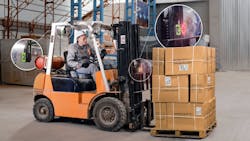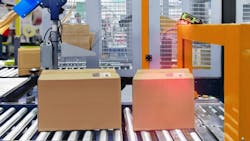The Machine Vision Renaissance: New Reasons to Take a Fresh Look
By Donato Montanari, Vice President and General Manager, Machine Vision, Zebra Technologies
In 2020, the manufacturing industry endured severe impacts from the global coronavirus pandemic. Forced shutdowns of manufacturing facilities in the early days of the crisis created significant dips in employment levels. And, as social distancing requirements forced retooling and massive layoffs, production levels dropped. In the first half of 2021, factory output grew by slightly over 1%, a meager increase considering the rapid growth in consumer demand. 1
A renewed purpose for industrial automation
The perfect storm of labor shortages, unprecedented e-commerce demands, and the need to improve speed and quality has driven manufacturing organizations around the world to reexamine industrial automation to help transform operations.
Interestingly, it was the pandemic that proved to be the tipping point for digital disruption, moving many companies to fast-forward technology maturation plans. A recent survey by McKinsey found the pandemic accelerated the digitization of supply chain interactions and internal operations by several years—and many of the changes they have made are here to stay. 2
Arguably, labor issues constitute the most critical sustained challenge for manufacturers. Recently, respondents to a National Association of Manufacturers survey indicated that “attracting and retaining a quality workforce” is one of their top business challenges. And a Deloitte study bears that out, finding that U.S. manufacturing is expected to have 2.1 million unfilled jobs by 2030.3
Focusing in on machine vision
A large portion of a factory's workforce focuses on quality control by visually inspecting and analyzing components on the assembly line. These same skilled workers are generally the most experienced and nearest to retirement. As employers plan for their departure, they are finding that replacing these expert workers is challenging. This is driving renewed interest in automated visual inspection using machine vision, which can accomplish quality checks down to the most minuscule detail.
Machine vision technology, which uses image-recognition algorithms to enable a detailed and accurate image of an object, is now taking a leading role in today’s industrial automation revolution. It can go well beyond the human eye's capabilities to process images similar to the way the human brain does. With the sophisticated computational capabilities of today’s sensors, processors, and cameras, machine vision systems can now provide images and intelligence that help manufacturers gain greater visibility into their physical operations.
Why now?
Until recently, the prevailing perception about machine vision was that it was complicated and only deployable by larger organizations with the time, skill, and financial resources to make it work. Even today, most machine vision systems require specialized training and advanced engineering skills to operate. The systems, which tend to be based on legacy platforms, are largely inflexible and often require a PhD to operate.
Recent advancements in technology have changed everything, though. Cutting-edge image sensors—supported by today’s powerful and smaller processing platforms—are driving down the costs of traditional machine vision systems. And, the technology has evolved to deliver the granular level of information needed to ensure the level of quality manufacturers need, thereby reducing recalls and returns.
Simple, intelligent systems have arrived
With the urgency to unlock the promise of industrial automation, innovative technologists are launching new solutions to drive higher levels of process efficiency and productivity. Their diligent innovation is centered on creating systems that are easy to integrate into existing operations, easy for front-line workers to use, and easy for IT to adapt and manage.
Some new systems employ a software-defined approach that cost-effectively supports machine vision and fixed industrial scanning in a single platform. Instead of requiring separate hardware and software for each application, these advanced solutions provide one easy-to-manage platform that meets the scanning, traceability and product inspection needs of manufacturers and their supply chain partners. Now, even small and midsized companies can realize the many benefits of industrial automation without the headaches involved with managing cumbersome legacy systems.
Visual inspection at facilities that manufacture automobile components, food, medicine and other critical products is a high priority. By implementing a software-defined, unified fixed industrial scanning and machine vision platform, manufacturers in the medical device and pharmaceutical industries, for example, can flawlessly decode, inspect and sort every part, pill, and package moving through production, storage and fulfillment. More than simply rejecting items that do not meet quality standards, these innovative systems provide manufacturers with details about precisely why the items were rejected so operators can take corrective actions and avoid further losses or compliance issues.
To learn more about machine vision solutions that help companies keep pace with the new demands of industrial manufacturing, click here.
Resources
1 Wall Street Journal, “Despite Demand, Factories Still Aren’t Humming,” July 15, 2021.
https://www.wsj.com/articles/despite-demand-factories-still-arent-humming-11626367441
2 McKinsey & Company, “How COVID-19 has pushed companies over the technology tipping point—and transformed business forever,” October 5, 2020. Link: https://www.mckinsey.com/business-functions/strategy-and-corporate-finance/our-insights/how-covid-19-has-pushed-companies-over-the-technology-tipping-point-and-transformed-business-forever
3 Deloitte, “Creating pathways for tomorrow’s workforce today,” May 04, 2021.
https://www2.deloitte.com/us/en/insights/industry/manufacturing/manufacturing-industry-diversity.html


